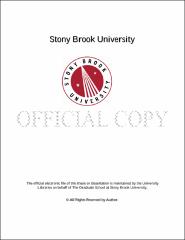| dcterms.abstract | With the increasing strain on existing fossil fuel resources and the serious concerns associated with the environmental impacts on CO2 release through the burning of fossil fuels, clean energy innovation is needed to “get us on the right path†to energy sustainability. Achieving this objective will necessitate a rational design, development, and deployment of schemes to create novel sources of ‘carbon-free’ power using materials with specific and desired functions or properties. In this dissertation, we have attempted to develop two different categories of carbon nanotube (CNT)-based nanoscale heterostructures, namely (a) CNT- CdSe quantum dot (QD) heterostructures and (b) CNT-Li4Ti5O12 (LTO) heterostructures, and to study their intriguing properties for applications associated with photovoltaics and lithium-ion batteries (LIBs). In terms of the potential of CNT-CdSe QD heterostructures for photovoltaic devices, we have put forth a unique compilation of complementary data from experiment and theory, including results from transmission electron microscopy (TEM), near-edge X-ray absorption fine structure (NEXAFS) spectroscopy, Raman spectroscopy, electrical transport measurements, and theoretical modeling studies, in order to probe charge transfer behavior within nanoscale composites composed of double-walled carbon nanotubes (DWNT) coupled with CdSe QDs. These heterostructures were probed as a function of QD size, the nature of the distinctive bridging ligand molecules used, as well as their unique attachment modalities. With respect to CNT-LTO heterostructures for LIB applications, a novel flower-like nanostructured LTO motif was synthesized by a facile, low-cost, and large-scale hydrothermal process involving re-useable and recyclable precursors followed by a short, relatively low-temperature calcination step in air. Furthermore, 3D “flower-like†LTO - multiwalled carbon nanotube (MWNT) composites were generated via different preparative approaches, including (i) physical sonication, (ii) an in situ direct deposition approach, as well as (iii) a covalent chemical attachment protocol. To the best of our knowledge, we are the first to correlate the actual preparative strategy, i.e. the particular chemical treatment process used to generate these composite materials, of a novel hierarchical nanoscale motif, relevant for battery applications, with its resulting physically significant electrochemical performance. | |

